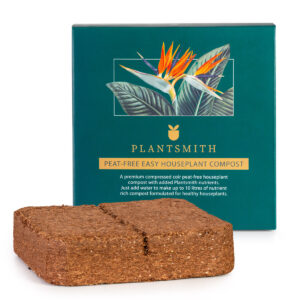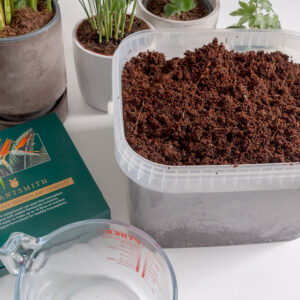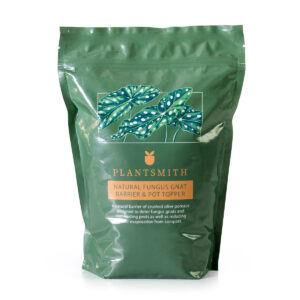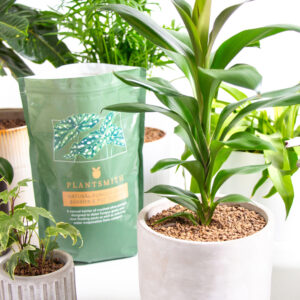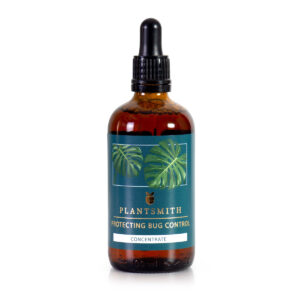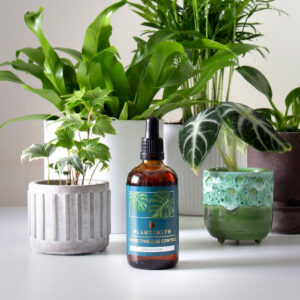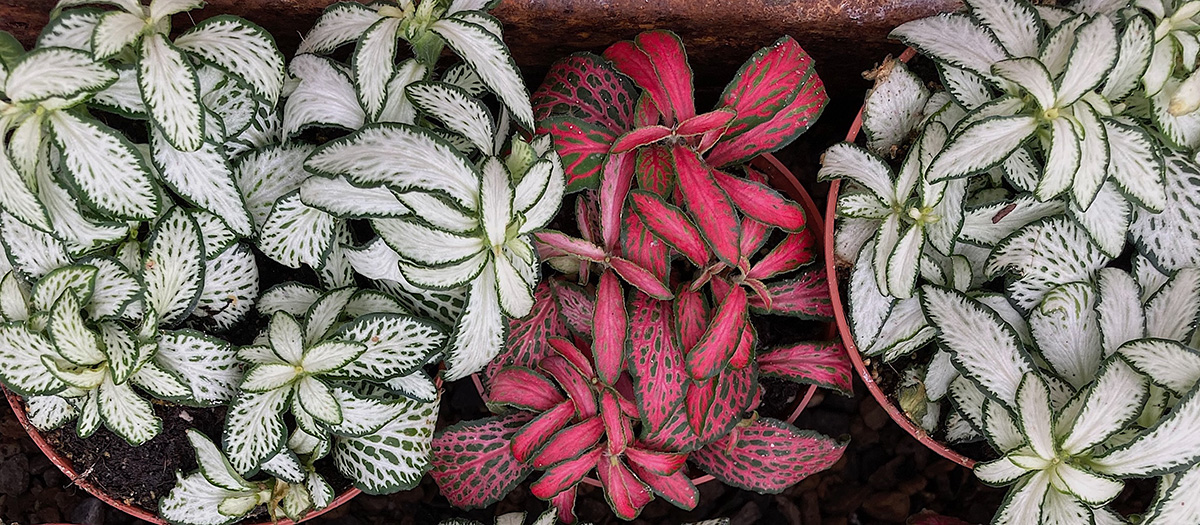Fittonia is an evergreen perennial which boasts beautiful deep-veined foliage. They naturally live on the floor of South American rainforests so are used to diffused light and highly humid conditions; if you manage to recreate this at home you will have a happy houseplant!
These ground-hugging, creeping houseplants only grow to about 15cm tall but spread outwards so form a colourful base which taller plants could grow around. Non-toxic to pets and children, these attractive tropical foliage plants are perfect for glass jars and terrariums.
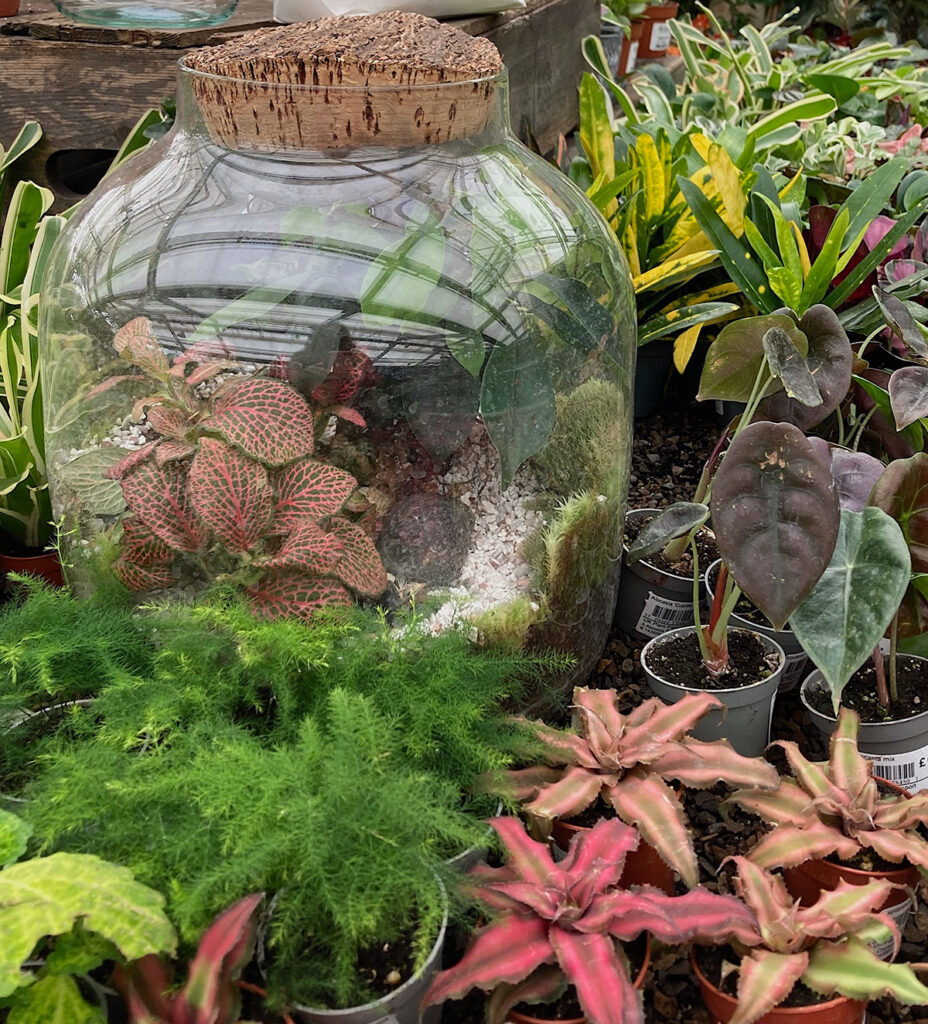
So what conditions are going to keep your Fittonia foliage flourishing?
Light
Fittonia grow best in indirect bright light; they are used to crowded, humid rainforests with plants competing for light and space. Their leaves will scorch in intense sunlight so favour north-facing windows or rooms lit by skylights; a kitchen or bathroom would be an ideal spot or a nice toasty, light terrarium.
Temperature
The optimal temperature for Fittonia is around 21°C (70°F) but they can happily live in conditions from 60°C – 80°C (15°F – 26°F), just keep plants away from drafts.
Fittonia love humid conditions. Grouping houseplants together is an easy way to increase humidity. You can also regularly spritz plants with a fine mist of rainwater and although misting only temporarily increases humidity around a plant, unless in a sealed unit like a terrarium, foliage will appreciate the moisture.
Plantsmith Perfecting Houseplant Care Mist will not only provide moisture but also nutrients and help recreate that humid rainforest environment these plants thrive in which our central heated homes cannot provide. Just be careful to not go too mad with misting or plants may rot.
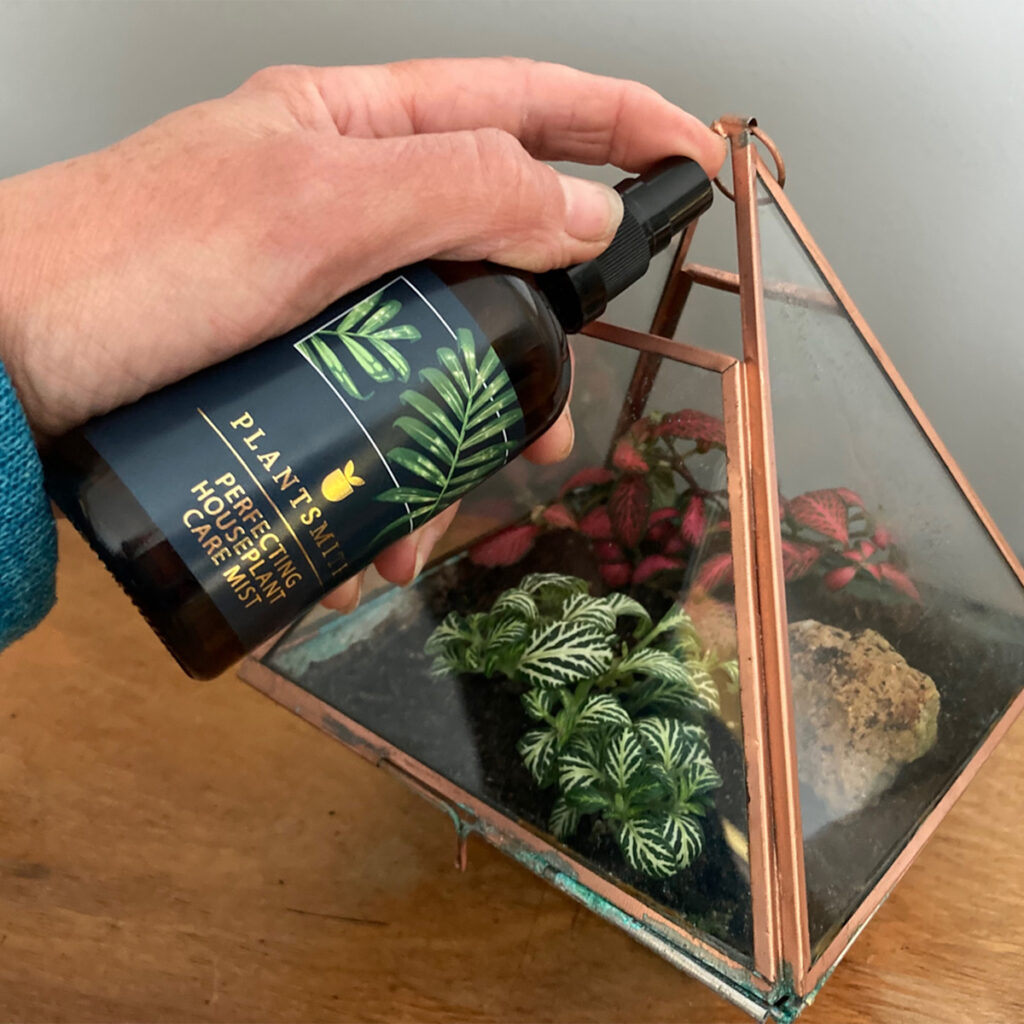
Water
Like most houseplants, Fittonia are not fans of soggy roots but equally do not enjoy completely drying out, in fact if left too long without water the leaves can collapse. Luckily foliage is easily restored with a good drink. Watering frequency will vary depending on where the plants are growing in the house, warmth, light and the time of the year.
Aim for once a week during the peak growing season but let the top soil dry out between waterings. Give them a good soak and let the excess water drip out the bottom of the pot. Water with rainwater but if you do not have access to rainwater boil the kettle and pour water into an open container. Leave for 24 hours so tap water chemicals like chlorine and fluoride can evaporate.
Soil
Use a specific houseplant potting mix or make your own bespoke mix. Combine compost with orchid bark or coir, sand and perlite to create a balance of organic matter which easily drains. Help air circulation around the roots by keeping soil light and aerated rather than compacted.
Fertiliser
Feed Fittonia every two to four weeks during the growing season with Plantsmith’s Fortifying Houseplant Feed & Tonic. This special blend of iron, potassium, magnesium, kelp and essential macro and micro nutrients promotes healthy foliage and growth and contains the optimum strength of nutrients for houseplants, which is important as over-fertilisation can do more damage than good.
Shake the bottle to ensure all nutrients are evenly mixed then add 5 ml (approx. 4 pumps) from the 500ml bottle or dilute one pipette from a 100ml bottle into a litre of tepid rainwater and apply.

Plants carry out all their chemical reactions in solution so soluble food saves the plant wasting energy breaking down material before they can use it. Houseplants rely entirely on us to feed them so make sure the formula you give them is specifically designed for houseplant’s needs.
Flowering
Fittonia do produce flowers in the wild but not very often in home conditions so give yourself a pat on the back if yours flowers. Look out for small white blooms that form on white or pink spikes.
Problem Solver
Why has my Fittonia developed limp, yellow leaves?
This can be due to overwatering. Make sure the plant container has a drainage hole so water does not sit in the bottom of the pot and rot roots. About half an hour after watering, tip out any water that has drained out of the pot and is sitting in the saucer.
Why does my Fittonia have crispy brown leaves?
Crispy leaves indicate dry air; relocate your plant to a more humid spot in your house like a bathroom or kitchen or pop it in a terrarium. If your plant is really unhappy in its growing conditions consider introducing an air humidifier.
Pests
Fittonia are fairly pest-free but look out for fungus gnats, aphids, mealy bugs and scale insects. If you find them, deal with the infestation quickly to stop it spreading as pest attacks can weaken plants.
Boost plant vigour with Plantsmith Protecting Bug Control Spray which is a blend of natural surfactants alongside iron chelate, manganese chelate and magnesium. This 100% vegan, natural formula helps deter pests as well as providing nutrients.
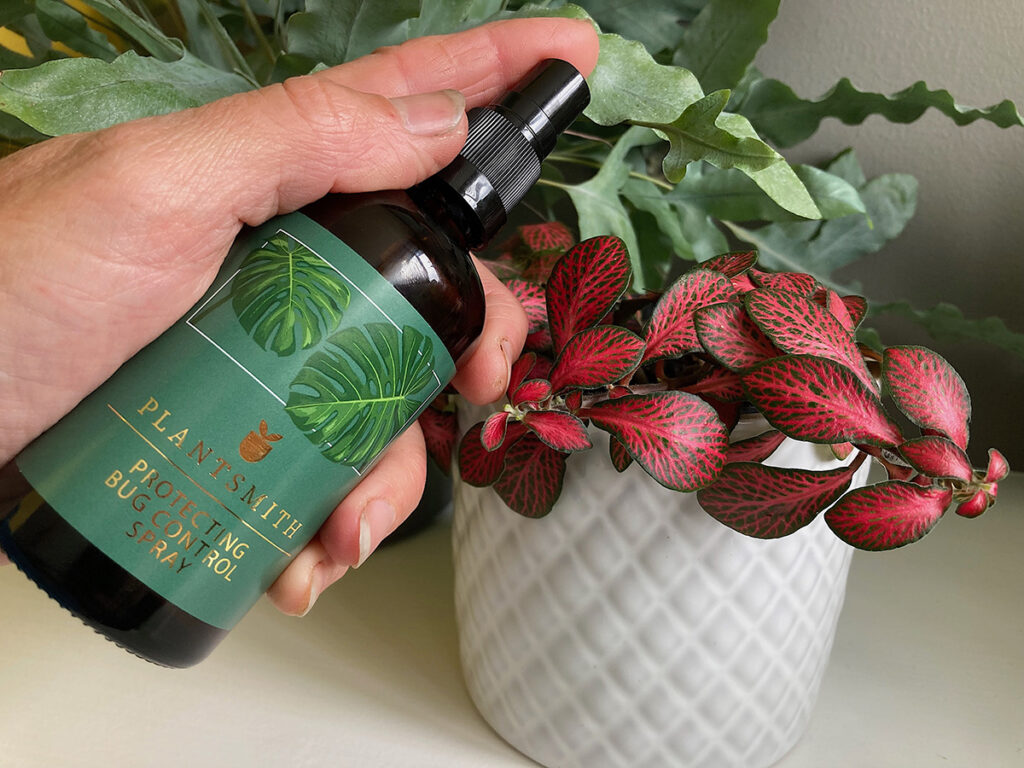
Propagation
Propagation could not be easier; remove your plant from its pot and tease roots apart until they naturally divide into separate clumps. Pot these individual clumps into fresh potting mix and you have just increased your plant collection or created lovely gifts for friends.
Fun Facts
So why is it called Fittonia? The plant is named after sisters Elizabeth and Sara Fitton who brought the plant to Europe in 1867. The sisters are authors of the illustrated book ‘Conversations on Botany’.
Fittonia is called the nerve plant as its veined leaves resemble the human nervous system.
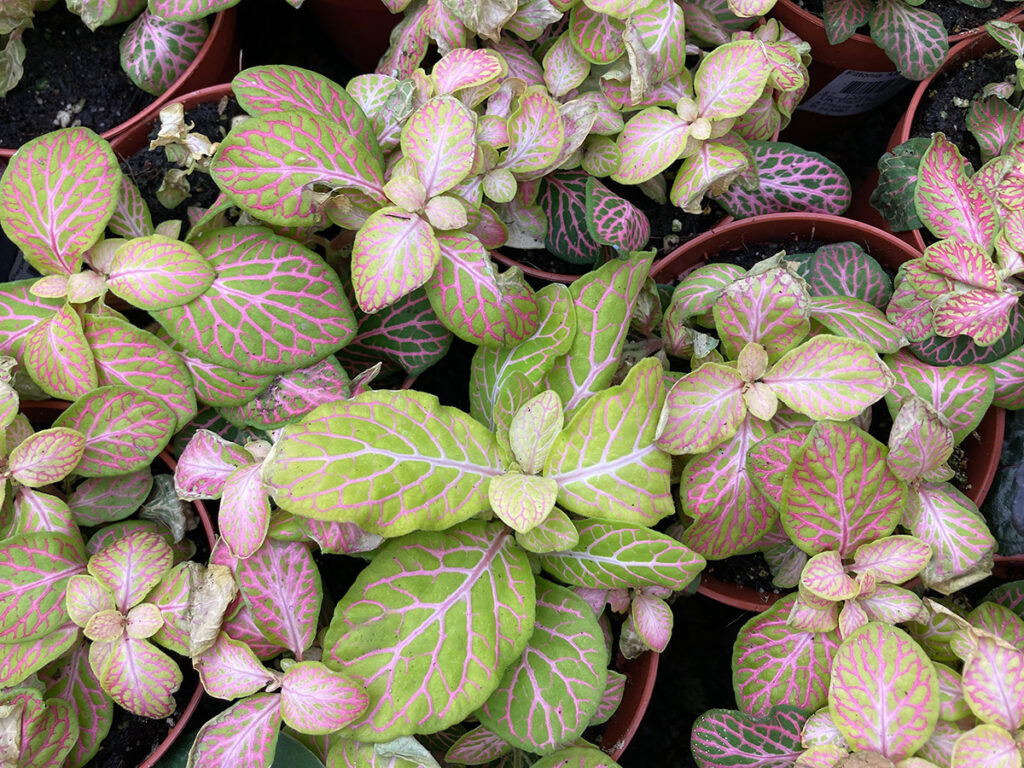
This plant has good air purifying properties and has been proven to remove toxins such as benzene,trichloroethylene and toluene from the air.
For centuries Fittonia has been used for medicinal purposes by South American tribes to relieve headaches and muscle aches.
Fittonia faint. They will let you know when they need a water if you have forgotten by dramatically collapsing but just add water to perk these potted plants back up.
